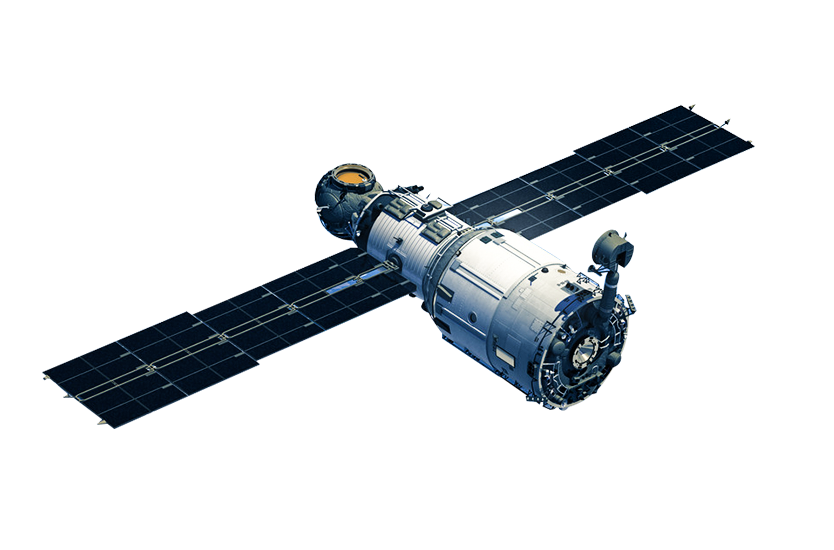
This image has format transparent PNG with resolution 834x550.
You can download this image in best resolution from this page and use it for design and web design.
Satellite PNG with transparent background you can download for free, just click on download button.
A satellite is an object that is intentionally placed into orbit. These objects are called artificial satellites to distinguish them from natural satellites such as Earth's Moon.
On 4 October 1957, the Soviet Union launched the world's first artificial satellite, Sputnik 1. Since then, about 8,900 satellites from more than 40 countries have been launched. According to a 2018 estimate, about 5,000 remained in orbit. Of those, about 1,900 were operational, while the rest had exceeded their useful lives and become space debris. Approximately 63% of operational satellites are in low Earth orbit, 6% are in medium-Earth orbit (at 20,000 km), 29% are in geostationary orbit (at 36,000 km) and the remaining 2% are in various elliptical orbits. In terms of countries with the most satellites, the United States has the most with 2,944 satellites, China is second with 499, and Russia third with 169. A few large space stations, including the International Space Station, have been launched in parts and assembled in orbit. Over a dozen space probes have been placed into orbit around other bodies and become artificial satellites of the Moon, Mercury, Venus, Mars, Jupiter, Saturn, a few asteroids, a comet and the Sun.
Satellites are used for many purposes. Among several other applications, they can be used to make star maps and maps of planetary surfaces, and also take pictures of planets they are launched into. Common types include military and civilian Earth observation satellites, communications satellites, navigation satellites, weather satellites, and space telescopes. Space stations and human spacecraft in orbit are also satellites.
Satellites can operate by themselves or as part of a larger system, a satellite formation or satellite constellation.
Satellite orbits have a large range depending on the purpose of the satellite, and are classified in a number of ways. Well-known (overlapping) classes include low Earth orbit, polar orbit, and geostationary orbit.
A launch vehicle is a rocket that places a satellite into orbit. Usually, it lifts off from a launch pad on land. Some are launched at sea from a submarine or a mobile maritime platform, or aboard a plane (see air launch to orbit).
Satellites are usually semi-independent computer-controlled systems. Satellite subsystems attend many tasks, such as power generation, thermal control, telemetry, attitude control, scientific instrumentation, communication, etc.
The first satellite, Sputnik 1, was put into orbit around Earth and was therefore in geocentric orbit. This is the most common type of orbit by far, with approximately 3,372 active artificial satellites orbiting the Earth. Geocentric orbits may be further classified by their altitude, inclination and eccentricity.
The commonly used altitude classifications of geocentric orbit are Low Earth orbit (LEO), Medium Earth orbit (MEO) and High Earth orbit (HEO). Low Earth orbit is any orbit below 2,000 km. Medium Earth orbit is any orbit between 2,000 and 35,786 km. High Earth orbit is any orbit higher than 35,786 km.
In this page you can download free PNG images: Satellite PNG images free download